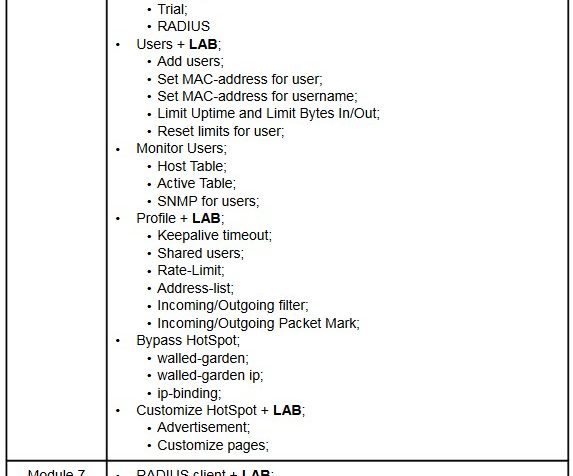La prima certificazione avanzata sul routing rilasciata da MikroTik è
MikroTik Certified Routing Engineer ( MTCRE )
Rivolto a WISP, internet service provider, sistemisti di rete e system integrators per conoscere approfonditamente il routing, in particolare OSPF, su MikroTik RouterOS.
La Certificazione MTCRE è di primaria importanza per tutti coloro che necessitano di utilizzare protocolli di routing, ed in particolare OSPF, oltre a IPIP, EoIP, PPTP, SSTP, L2TP, Vlan e VRRP.
La Certificazione MTCRE è inoltre un requisito per accedere al Corso di Certificazione
MTCINE – MikroTik Certified Inter-networking Engineer.
ATTENZIONE: Per poter partecipare al corso MTCRE è indispensabile essere già in possesso della Certificazione MTCNA.
Questi gli argomenti che vengono trattati nel corso MTCRE:





























